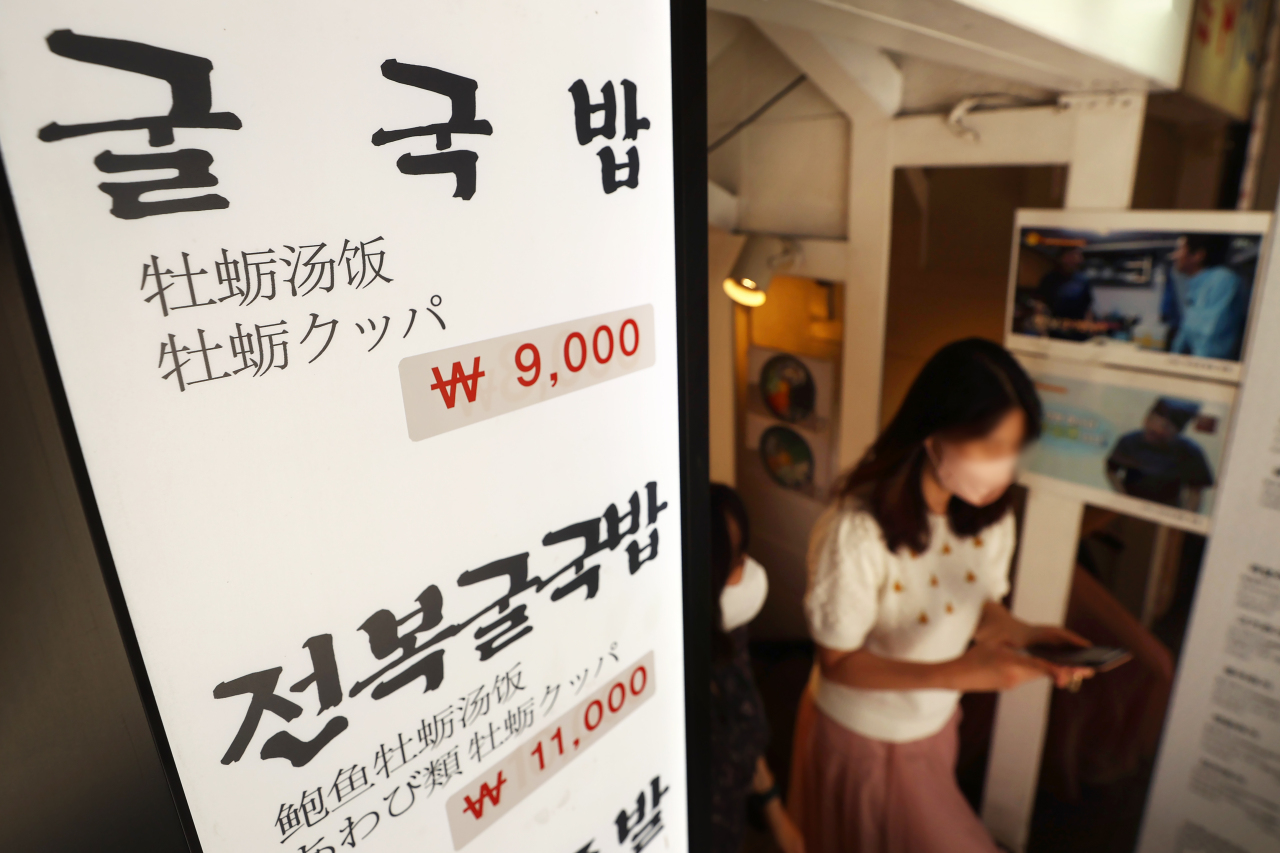 |
Stickers, attached on the standing signboard at a restaurant in Seoul on Friday, suggest recent hikes in price tags on food amid high inflation. (Yonhap) |
SEJONG -- The nation’s high inflation, which has led to a spike in consumer prices since the latter half of 2021, is weakening the purchasing power of households in the low-income bracket, as they spend a large portion of their monthly disposable income on daily necessities, state data showed Tuesday.
According to the Finance Ministry and Statistics Korea, households which belong to the bottom 20 percent in terms of income level spent an average 42.2 percent of their monthly disposable income on food expenses including groceries and dining out in the first quarter of 2022.
Out of their average monthly disposable income of 847,039 won ($673), their food expenses came to 357,754 won -- 251,783 won on groceries and 105,971 won on dining out.
Disposable income refers to the money remaining -- after households have paid taxes, utility bills or insurance premiums -- which could be used for consumption or savings.
This contrasts to households in the top 20 percent income bracket, whose spending on the same food expenses stayed at an average of 13.2 percent of their disposable income during the corresponding January-March period.
The figure for the low-income households also showed a wide gap with average households, which spent 18.3 percent of their disposable income on groceries and eating out.
“Due to a growing burden on living expenses among low-income households, their (overall) purchasing power has contracted,” said a Finance Ministry official.
Statistics Korea data showed that consumer prices of groceries climbed by 4.1 percent in the first quarter of the year, compared to the same period in 2021.
Further, prices of food services, such as dining at restaurants and deliveries, rose by 6.1 percent on-year.
The situation has recently taken a more serious turn. Prices for dining out surged by 7.4 percent on-year in May, which marked the highest in 24 years since a 7.6 percent growth in March 1998.
Prices of livestock rose 12.1 percent in the month; 27.9 percent in prices of imported beef; 20.7 percent in prices of pork; and 16.1 percent in prices of chicken.
If consumer prices continue to spiral, ordinary households have no choice but to reduce their consumption. Weak consumption brings about the effect of scaling back economic growth.
Low gross domestic product growth usually causes a decline in household income, which again restricts spending in a vicious circle, market insiders say.
By Kim Yon-se (
kys@heraldcorp.com)








![[Weekender] Korea's traditional sauce culture gains global recognition](http://res.heraldm.com/phpwas/restmb_idxmake.php?idx=644&simg=/content/image/2024/11/21/20241121050153_0.jpg)